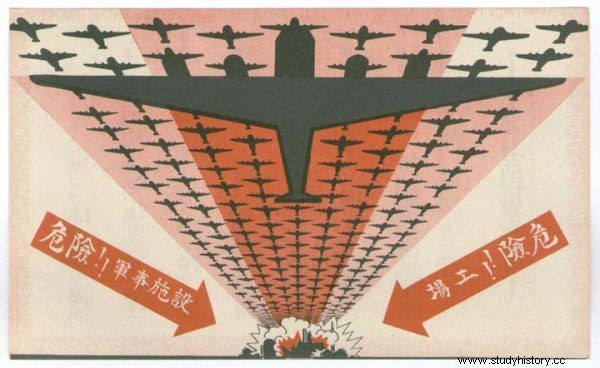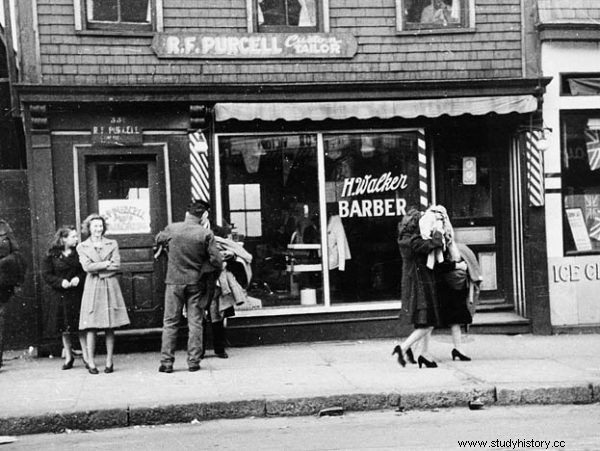A wave of rapes, looting and lynching. Tragic misunderstandings and unrealized dreams. The end of the world's greatest conflict turned out to be the most difficult for many of its participants to survive. After all, it's always darkest before dawn.
As always, all positions in the TOP10 ranking are based on the articles we publish. This time we decided to show the dramatic events that took place at the end of the greatest conflict in history. You can read more about the Second World War HERE.
Who would have expected that during the last days of World War II…
10. Polish women disfigured themselves to avoid rapes by Red Army soldiers

Nobody could feel safe in the vicinity of the Red Army soldiers. Neither old women nor little girls.
After the "liberation" of Poland by the Red Army soldiers, no woman could feel safe. Some Polish women tried to cheat potential torturers. They wrapped themselves in shawls, put on several layers of clothes, rubbed ashes on their skin. In Rokitno, the mother cut her daughter's long blonde hair, because it attracted the attention of the soldiers. The girl was only 11 years old (read more about that).
9. The Krasnarms could not resist the inedible delicacies

Nivea cream, taken by Red Army soldiers as a delicacy for sandwiches.
The starving Red Army soldiers in the conquered lands tasted everything that appeared to be food. In one village they ate a barrel of machine grease left by the Germans. They thought it was marmalade. In Oszmiana, in turn, they deprived a woman of all her supply of Nivea. They spread it on bread, presumably assuming that it was lard with special flavors (read more about this).
8. The Americans almost renewed the conflict

The American propaganda leaflet dropped on Japanese territories could not fill the emperor's subjects with optimism.
On August 19, 1945, a group of high-ranking Japanese generals, heading for capitulation talks, made a stopover in Okinawa. The newcomer was greeted only by a squad of soldiers with machine guns, ready to "knock the gnomes out" if they started to behave strangely. The oversensitivity of the squad commanders almost prolonged the conflict in the Pacific. However, they had specific reasons for it (read more about that).
7. American soldiers behaved like animals in Europe

In occupied Germany, the American soldiers did not do much better than the Red Army. The photo shows German women raped and murdered by the Soviets.
When the Allies entered Germany in the spring of 1945, American soldiers decided that they were allowed to plunder and plunder to the point of resistance. The US attorney's attorney handled approximately 500 rape cases every week! Robberies were often done for entertainment. Once upon a time, the Americans stole an ambulance and took a ride in it, while in the rear of the vehicle a German doctor was delivering (read more about this).
6. The fights on the Baltic Sea continued despite the capitulation of the Third Reich

The situation on the fronts of World War II in Europe on May 1, 1945.
The last clashes on the Baltic Sea were fought on Hel and Mierzeja Wiślana. Almost 200,000 German soldiers gathered on the first peninsula, blocking the land crossing, creating a dam with broken locomotives. They capitulated only on May 9. The Soviet air raids continued to air strikes at the positions on the Vistula Spit three days later. Eventually the fighting didn't end until May 13 (read more about that).
5. The Italians have a true fascist hunt

The bodies of Benito Mussolini (second from left), Clara Petacci and three prominent fascists hung at a gas station at Pizzale Loreto in Milan.
On April 28, 1945, Benito Mussolini and his lover Clara Petacci were shot by partisans. The body was taken to Milan and hanged upside down in front of the gas station building. They were quickly desecrated by the crowd and so massacred that it was difficult to recognize them. All northern Italy plunged into a frenzy of bloody revenge. Even those who were only suspected of having any connection to fascists were killed (read more on this) .
4. There were bloody riots in Canada

Broken windows in one of the barbers' premises, Halifax, May 8, 1945.
On May 7, 1945, over nine thousand sailors disembarked in Halifax, Canada. There was no room for them in overcrowded hotels. Frustrated soldiers set trams on fire, smashed windows and robbed liquor stores. It was not until the evening of May 8 that the situation was brought under control. Three people died as a result of the incidents, including two due to alcohol poisoning. 654 venues have been demolished and total losses are estimated at $ 5 million (read more about it) .
3. German women were raped by Poles

Red Army soldiers were the main, though not the only, threat to the citizens of the occupied territories.
Polish soldiers, capturing Lower Silesian towns, took the model of the Red Army rapists. In Szklarska Poreba, a girl she became a victim of six of our countrymen. Maidens often ended up in Polish "farms", where in the evenings they had to fulfill the wishes of the lieutenant and non-commissioned officers. Some stayed there for weeks (read more about that) .
2. NKVD officers opened their own camp in Auschwitz

The war was not over for good and the NKVD opened its own camp in Oświęcim.
As early as February 1945, the Soviet authorities established two sub-camps in KL Auschwitz. The first one was intended for German prisoners of war. In the second, Silesians were detained. The prisoners worked in primitive conditions that resulted in mutilation and even death. The commandant of the camp said about the Silesians deported to the Donetsk Basin that they were going there for "profit" purposes (read more on this topic) .
1. Gen. Anders planned to recapture Poland from the communists

Polish bugler on the ruins of Monte Cassino. He could play the national anthem at the victory parade in Warsaw.
In May 1945, in an interview with the British field marshal Alan Brooke, the commander of the Polish Armed Forces in the West stated that he intended to break through to Poland and liberate it from the hands of the Soviets. The plan of the attack on the territories occupied by the Red Army was drawn up by Winston Churchill himself, and the operation was codenamed "Unthinkable" (read more about this).
